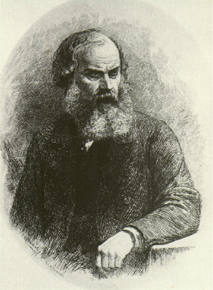HPhizaPhizbPhizlPhizoPhiztPhiz PhizKPhiznPhiziPhizgPhizhPhiztPhiz Phiz‚PhizÄPhizúPhizPPhizhPhiziPhizzPhiz‚PhizÄPhizĚPhiz PhizBPhizrPhizoPhizwPhiznPhiz (Hablot Knight Brown)

British Book Illustrator. He began his career as an apprentice at the engraving firm of Findon Brothers, London. ¬†Engraving was laborious work and he soon progressed to working on etchings and watercolors. ¬†In 1833 he won the Society of Arts’ medal for his etching “John Gilpin’s Ride”. ¬†In 1834 he went into business as an etcher, engraver and illustrator with fellow apprentice Robert Young. ¬†Two years later, he began his long running collaboration with Charles Dickens by illustrating the pamphlet “Sunday Under Three Heads.” ¬†Soon after this he adopted the pen name “Phiz”, by which he is still known today. ¬†In 1836 he replaced Robert W. Buss as illustrator for “The Pickwick Papers.” ¬†He went on to illustrate nine more books for Dickens, including “The Life and Adventures of Nicholas Nickleby” (1838), “The Life and Adventures of Martin Chuzzlewitt” (1843), and “David Copperfield” (1849). ¬†Dickens was disatisfied with his work on “A Tale of Two Cities” (1859), feeling it lacked the detail of his earlier work. ¬†Dickens also wanted an artist with a more contemporary style. ¬†Although saddened by the break up with Dickens, Brown continued to work prolificly. ¬†Other authors whose work he illustrated include Harriet Beecher Stowe, Sir Walter Scott and Lord Byron. ¬†He also worked regularly for a number of periodicals such as “Punch,” the “Illustrated London News” and “Life.” ¬†He continued to work even after he was partially paralysed by a stroke in 1867, but when his health failed to improve he was given an annuity by the Royal Acadamy. ¬†His career lasted for 47 years, and a blue plaque commemorates his house in Ladbrook Grove in London. ¬† (bio by: js)
Born
- July, 10, 1815
- England
Died
- July, 07, 1882
- England
Cemetery
- Extra-Mural Cemetery
- England

